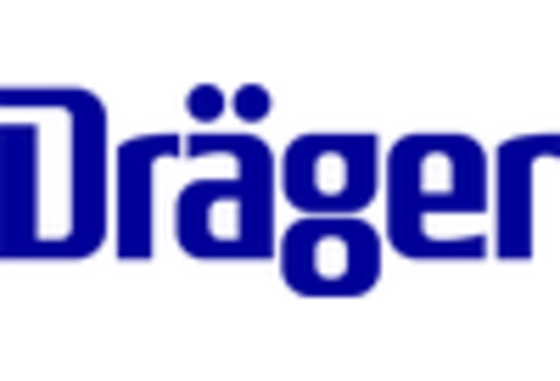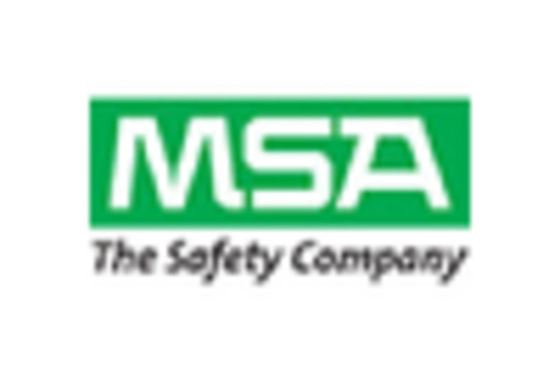Growing Awareness of Workplace Safety
The heightened awareness of workplace safety is driving the Gas Detector Market forward. Organizations are increasingly recognizing the importance of implementing safety measures to protect employees from potential gas hazards. This awareness is leading to a surge in demand for gas detection systems across various sectors, including manufacturing, construction, and healthcare. Companies are investing in advanced gas detectors to ensure compliance with safety regulations and to foster a culture of safety within the workplace. The market is expected to grow at a rate of approximately 6% annually, as businesses prioritize employee safety and risk management. This trend underscores the critical role of gas detection technologies in safeguarding workers and enhancing operational safety within the Gas Detector Market.
Increased Focus on Environmental Safety
The growing emphasis on environmental safety is significantly influencing the Gas Detector Market. As awareness of environmental issues rises, industries are increasingly adopting gas detection systems to monitor emissions and prevent hazardous leaks. This trend is particularly evident in sectors such as Oil And Gas Transportation, chemicals, and manufacturing, where the potential for environmental damage is substantial. The market is projected to expand as companies prioritize sustainability and environmental responsibility. According to recent estimates, the demand for gas detectors in environmental monitoring applications is expected to increase by over 10% annually. This shift towards environmentally conscious practices is likely to propel the Gas Detector Market forward, as organizations seek to align with global sustainability goals.
Rising Industrialization and Urbanization
The rapid pace of industrialization and urbanization is a key driver of the Gas Detector Market. As urban areas expand and industries proliferate, the need for effective gas detection systems becomes increasingly critical. Industrial facilities, particularly in sectors such as manufacturing, construction, and energy, are adopting gas detectors to ensure safety and compliance with regulations. The market is projected to witness significant growth, with an estimated increase in demand for gas detection solutions by approximately 8% annually over the next five years. This trend is further fueled by the expansion of infrastructure projects in developing regions, where safety measures are paramount. Consequently, the Gas Detector Market is poised to benefit from the ongoing industrial and urban development.
Regulatory Compliance and Safety Standards
Regulatory compliance plays a pivotal role in shaping the Gas Detector Market. Governments and regulatory bodies worldwide are implementing stringent safety standards to mitigate risks associated with gas leaks. Compliance with these regulations is not only mandatory but also essential for ensuring workplace safety. The market is witnessing an increase in demand for gas detectors that meet these evolving standards. For instance, the Occupational Safety and Health Administration (OSHA) has established guidelines that necessitate the use of gas detection systems in various industries. This regulatory landscape is expected to drive market growth, as companies invest in compliant technologies to avoid penalties and enhance safety measures. The Gas Detector Market is thus positioned to benefit from the ongoing emphasis on regulatory adherence.
Technological Advancements in Gas Detection
The Gas Detector Market is experiencing a surge in technological advancements, which significantly enhances detection capabilities. Innovations such as smart sensors and IoT integration are becoming increasingly prevalent. These technologies allow for real-time monitoring and data analysis, improving response times to gas leaks. The market for gas detectors is projected to grow at a compound annual growth rate of approximately 7.5% from 2025 to 2030, driven by these advancements. Furthermore, the integration of artificial intelligence in gas detection systems is expected to optimize performance and reliability. As industries seek to enhance safety protocols, the demand for advanced gas detection technologies is likely to rise, positioning the Gas Detector Market for substantial growth.

















Leave a Comment